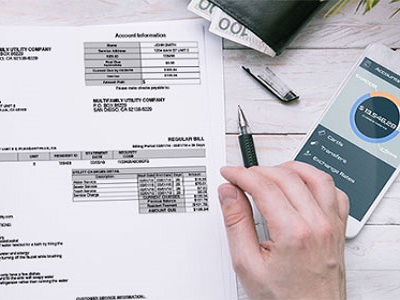
Kick Off Call Between India and US Team
An initial kick-off call/kick-off email is done. In the call/email, there are mutual introductions of processing staff and supervisory staff at both US and India ends. Also, contact points for escalation of issues are established. Some processes may require initial training related to software, business practices and accounting procedures of the client. In the first 1-2 months, these training calls may be done every alternate day or weekly, depending on the complexity of the accounting and business practices, extent of existing process documentation and other related factor. There is also a sharing of list of holidays, work timings among other things. The data transfer and software access modes are discussed (detailed below).

Migration and Planning Phase
a) Remote Access/ Web Accounting Software: Depending on the technology option chosen, either a remote connection is set-up for accessing the accounting software hosted in client premises or web access is provided for the online accounting software. Remote access is provided using Windows Remote Desktop Protocol (RDP) or through third party remote access tools such as GoToMyPC, Citrix, LogMeIn and others. If the client uses existing web based accounting software such as QuickBooks Online, Appfolio than web access is provided by sharing credentials of online web based software. Also, View Only login access information of banks, utilities accounts, Paypal accounts, credit card accounts etc. is shared with the India team.
Alternatively, clients can also send weekly or monthly bank statements, credit card statements, utility invoices etc. or set-up automated emailing of bank statements, Paypal statements etc. to India team.

b) Offline Accounting Software: Software data file on which work has to be performed (* applicable only in QuickBooks and Peachtree)

c) Transfer of Data: Data can be transferred to India end through various means depending upon the volume of data, time, ease of use and technology available at client end. The technology options available for transferring of data are eFax, scanned form in emails, through drop box, upload on our dedicated US server, pick-up from client server or through a document management software. The first three methods are recommended only when the volume of data is low to medium volume. The remaining three methods are used in processes that involve high volume of data transfer, multiple sources of data transfer, and when multiple types of data are used. They enable a fast and reliable multi-user data transfer environment, easy look-up of documents and differentiated level of access.

d) Process Formats & Documentations: Process documentation and the level of detail captured in it are important factors that determine the pace of process transition. The India team reviews existing process documentation such as job descriptions, instruction sheets, excel based accounting schedules and reconciliation sheets, existing document templates or notes provided by client. Often however, client documentation is scarce or not complete. So the India team builds up process manuals, checklists and notes covering vendor specific instructions, expense allocations, PO matching rules, invoice approval process, payment due dates, memos/descriptions in invoices, and accounts used for different type of expenses. Please refer (include Link) for sample AP operating manual prepared by Indian team.

e) Reporting Formats: Different reporting formats either pre-defined by the client or prepared by India end are used to communicate work status, progress against specific project milestones, highlight issues and meet other client reporting requirements. These reports can include following: Confirmation reports related to uploading/ downloading of data, status reports of processing of data, reporting of issues arising during processing, weekly reconciliations status, aging reports, month end reporting, financial statements, and variance analysis as compared to budgeted figures.

f) Testing of remote access connections for speed, security, timeout issues and other functional requirements

Pilot Phase
Duration: 2-6 weeks depending on scale and complexity of AP process
The objective of the pilot phase is to test the process, to resolve and fine-tune process related issues and to establish service level parameters. This provides an opportunity for US end to understand the procedural activities involved in outsourcing (like transfer of data, reporting formats etc) and the Indian end to implement the migration plan. Some of things needed from client end are as follows:
1) If client is following PO based processing in accounts payable then we will need process document of whole procedure i.e. a) Who will be responsible for creating & approving POs? b) Matching points in between PO and Invoice like, item description, quantity, amount. c) What are allowable PO tolerances (allowable difference between PO and invoice) and procedures for invoices exceeding allowable PO tolerances? d) How to close unutilized POs?
2) Initially, we will process some sample sets of vendor & utility bills in the software as per instructions & existing procedure. This is done to check complexity of the process, fine-tine existing procedures, and to establish processing speed. This will determine process review benchmarks such as processing speed, work allocations and also help achieve the right work-staff skill fit.
3) Whenever you upload the data, please fill the file-tracker format provided by India. This is a very important format as it helps us keep track of data sent by you against the data received by us.
4) Team will process sample data in software and could initially raise some clarifications related to nature of expense, accounts, divisional codes, allocations or some software related issues. Responses to these queries and our practices questionnaire will be documented as a standard operating manual, which will be updated as and when required.

Ongoing Phase
The feedback generated from the pilot phase is used to assess need for additional training, corrections in process and staffing changes (rarely). After successful completion of “Pilot Phase” and resolving of all queries related to processing, the team starts handling complete regular work volume. In clients with large invoice processing volumes (100,000 invoices and more monthly), we can be a middle scale-up phase between initial pilot phase and a completely scaled up ongoing work phase.







